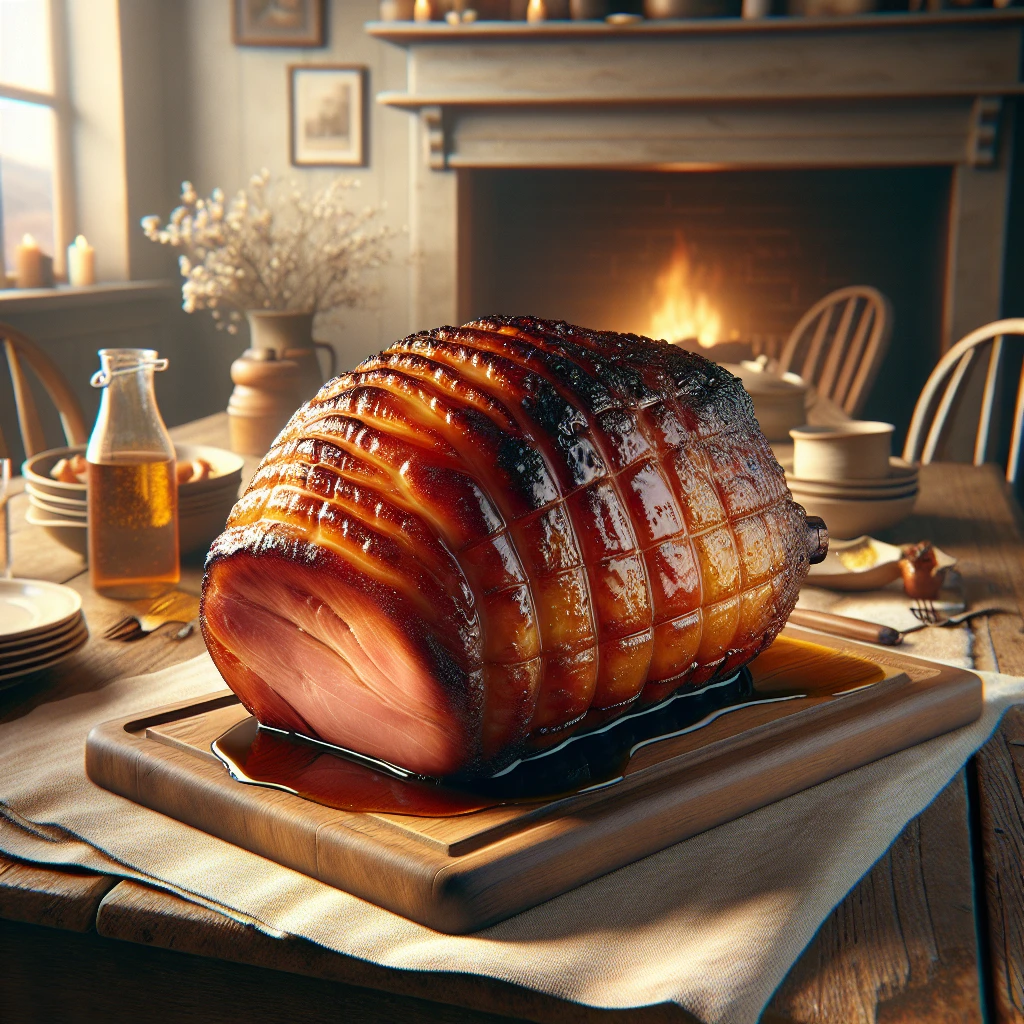
This Maple-Mustard Slow Cooker Ham is the perfect blend of sweet and savory, making it an ideal centerpiece for your holiday table or any special occasion. With minimal prep and a slow cooker doing all the work, it's a stress-free way to impress your guests.
Ham: The star of the show, a bone-in ham provides more flavor and moisture. Trim excess fat for a cleaner finish.
Maple syrup: Adds a rich, natural sweetness with a hint of caramel flavor.
Dijon mustard: Offers a tangy contrast that complements the sweetness of the maple syrup.
Apple cider vinegar: Provides acidity to balance the flavors and tenderize the meat.
Brown sugar: Enhances the sweetness and helps create a caramelized glaze.
Ground cinnamon, cloves, and nutmeg: These spices add warmth and depth to the glaze, making it feel festive and cozy.
Black pepper: Adds a subtle hint of spice to balance the sweetness.
Pair this ham with creamy mashed potatoes or roasted vegetables for a complete meal. A side of tangy coleslaw or a fresh green salad can add a refreshing contrast. For bread options, consider soft dinner rolls or a crusty baguette to mop up any extra glaze.
Start by grabbing a medium-sized bowl and your trusty whisk. Combine the maple syrup, Dijon mustard, apple cider vinegar, brown sugar, cinnamon, cloves, nutmeg, and black pepper. Whisk them together until everything is smooth and well-blended. This is your flavorful glaze.
Next, place your ham in the slow cooker. Before you do, make sure to trim off any excess fat. This helps the glaze penetrate the meat more effectively and prevents a greasy result.
Pour the maple-mustard glaze over the ham, ensuring it’s evenly coated. You want every inch of the ham to soak up this deliciousness.
Cover the slow cooker with its lid. Set the cooker to low heat. Let it cook for 6 to 7 hours. If you can, baste the ham occasionally with the glaze to enhance flavor absorption and keep it moist.
Once the time’s up, check if the ham is tender and heated through. Let it rest for about 10 minutes before slicing. This resting period allows the juices to redistribute, resulting in juicier slices.